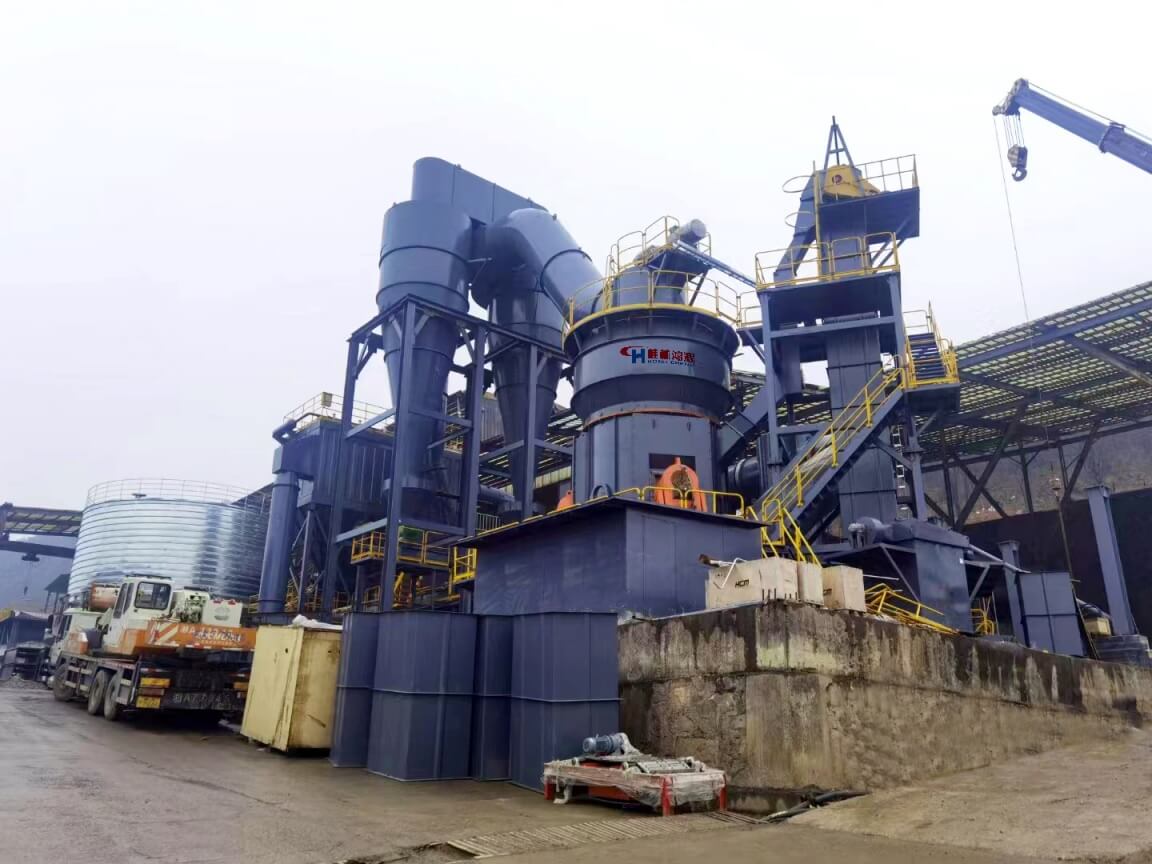Silica tailings is a major type of tailings, and its emission accounts for more than 50% of metal mine tailings. Its rational utilization plays an important role in driving the emission reduction and utilization of tailings in the mining industry. So, can tailings sand be used as cement admixture? Guilin Hongcheng, as a tailings vertical mill manufacturer, will introduce the tailings cement micro powder technology to you today.
The addition of cement mixture not only increases the output of cement, but also improves the performance of cement, which meets the needs of some special projects. Judging from the current application situation, cement mixture materials are mainly granulated blast furnace slag and fly ash. However, with the rapid growth of cement production, it is difficult to meet the needs of the cement industry only relying on metallurgical and power industry waste as admixtures. Tailings have a wide range of sources and low cost, and are an important potential source of cement mixture materials. Can tailings sand be used as cement admixture?
Tailings cement micro powder technology
Pozzolanic material refers to a type of material containing silicon or aluminum that has almost no gelatinity, but can chemically react with calcium hydroxide at room temperature to form a hydraulic product, including natural pozzolan materials and artificial pozzolans Two categories of materials. Pozzolanic materials are widely used as cement and concrete mixing materials, and their activity comes from the absorption of lime by active SiO2 and Al2O3. The application performance of the cement is improved by reacting the active components in the pozzolanic material with the hydration product Ca(OH)2 of Portland cement to generate calcium silicate hydrate, calcium aluminate hydrate or calcium aluminosilicate hydrate. The use of pozzolanic mixed materials can reduce the carbon emissions of the entire cement industry, reduce the impact of cement production on the environment, and at the same time improve the performance of cement or concrete to varying degrees. Therefore, it is of great significance to broaden the source of pozzolanic materials by activating the pozzolanic properties of mineral powder materials such as tailings.
For a long time, it was generally believed that volcanic ash is only some substances with a glassy structure. Therefore, the pozzolanic properties of various metallurgical slags with a vitreous structure were first extensively studied. However, crystalline minerals are generally considered as inert materials of pozzolanic materials, and there are few research reports on their pozzolanic properties. However, due to the wider source and lower cost of crystalline mineral raw materials, the research on the pozzolanic properties of crystalline minerals has aroused the interest of some researchers in recent years. Salim Guettala and Bouzidi Mezghiche pointed out that natural crystalline wind-collected sand can exhibit good pozzolanic properties after being ground to a specific surface area of 4000 cm2/g, and when mixed with lime at a ratio of 1:1, C-S- H gel product, under the premise of ensuring the same strength, can replace about 20% of cement. Benezet and Benhassaini pointed out that fine crystalline quartz powder can react with calcium hydroxide to form stable hydrate under normal temperature curing, and after grinding to 1-10 μm, it can be completely hydrated at 20°C for 28-90 days. It is also proposed that the hydration reaction mainly originates from the amorphization effect on the surface of ultrafine quartz particles. Studies have shown that mortars containing quartz cement have a better degree of hydration than mortars.
In addition, studies have shown that a certain fineness of limestone natural mineral powder can produce hydration reactions in cement mortar. It can be seen that after some mineral powders are ultra-finely ground, their pozzolanic reactivity can be activated, so that some crystalline mineral powders exhibit pozzolanic reactivity. The mechanical activation produced by ultra-fine grinding has a significant effect on improving the hydration and mechanical properties of various cements. Mechanically activated cement not only has higher strength, but also has fast hydration speed and short setting time. Under the action of an alkali metal salt chemical activator, the hydration reaction of lime-volcanic ash can be further promoted. Granulated blast furnace slag is a kind of pozzolanic slag with vitreous structure produced in the ironmaking process. However, the pozzolanic characteristics of granulated blast furnace slag are also potential, and can only be manifested after reaching a certain grinding fineness.

Tailings Vertical Grinding Mill, welcome to leave a message or consult [email protected]
The above studies show that pozzolanic materials have good application properties and broad application prospects in cement mixture materials. Ultrafine grinding mill is an effective means to enhance the reactivity of minerals. Under the mechanical activation of ultra-fine powder, it can show a certain pozzolanic activity. The HLM tailings vertical mill produced by Guilin Hongcheng is an ideal equipment for realizing tailings cement micro-powder technology. It can process tailings sand to a ratio of 400-700 and fully stimulate the pozzolanic activity of tailings powder. If you have related equipment needs, welcome to leave us a message for details.